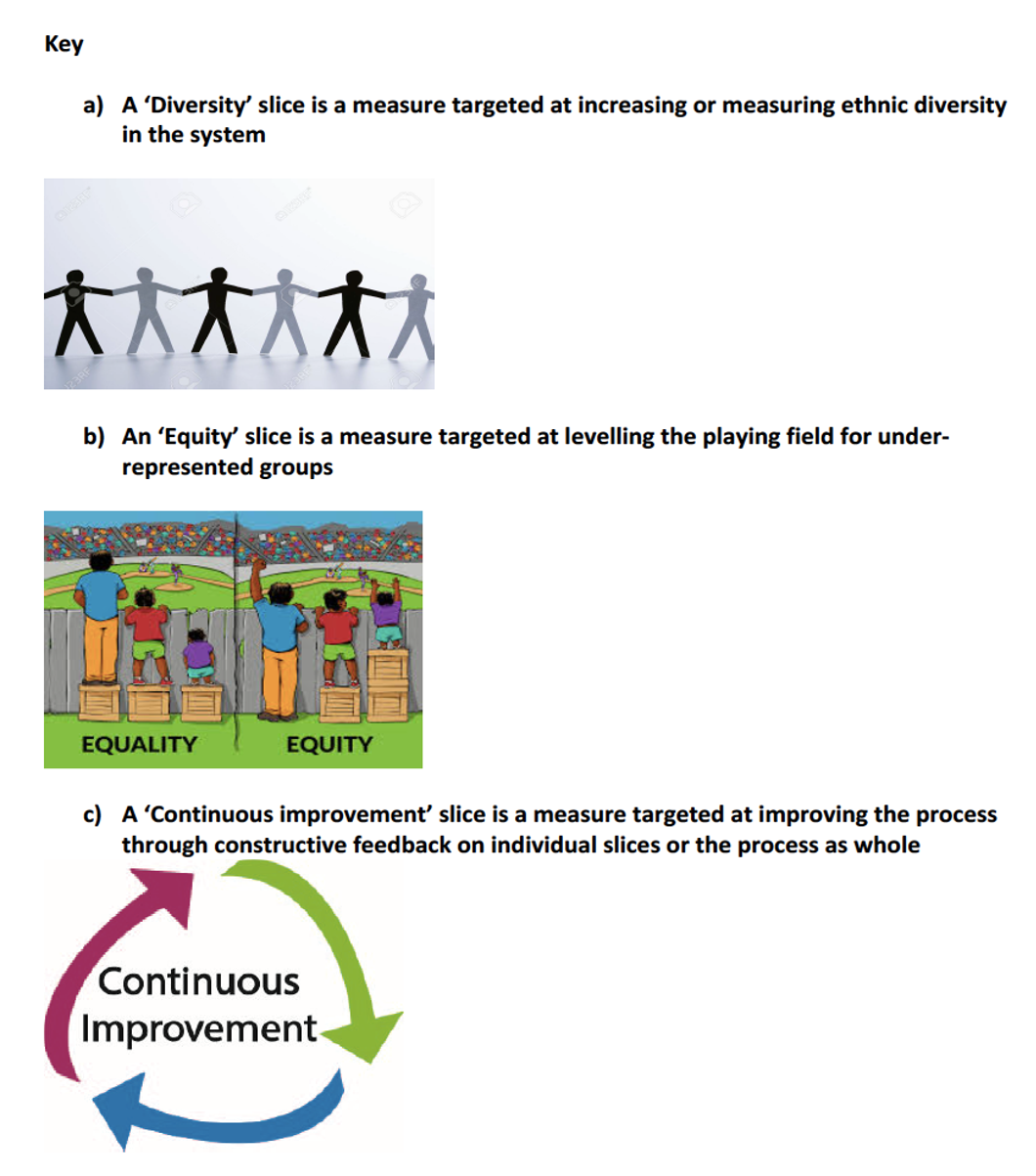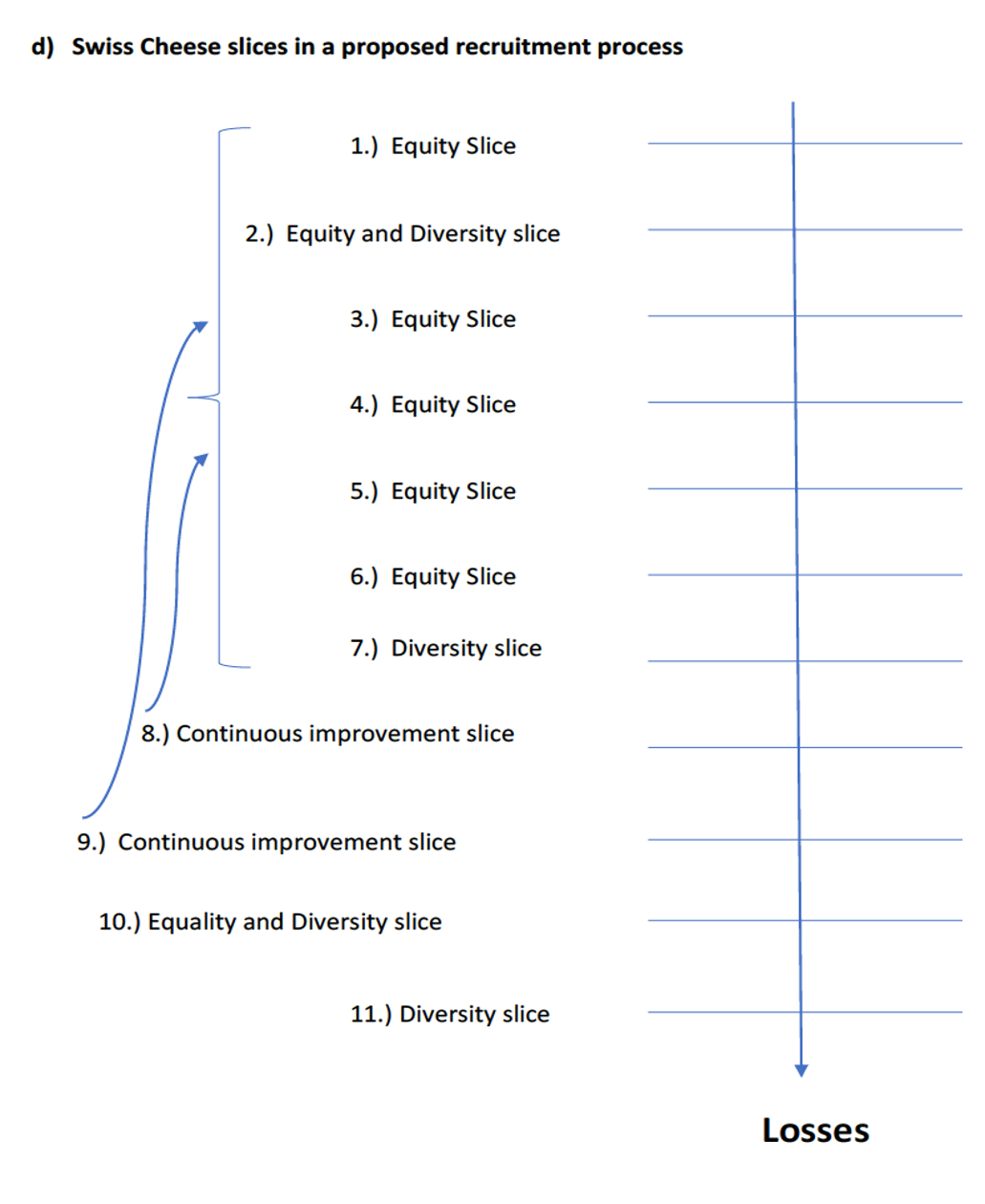According to the ‘Swiss Cheese Model’ propounded by James Reason, complex systems can yield losses when flaws in defences against hazards become aligned. Flaws in latent conditions at the ‘blunt’ organisational end permit active failures to be committed at the ‘sharp end’ by individuals (1).
The ‘Swiss Cheese’ approach has commonly been regarded to have utility in patient safety modelling (2), founding safety cultures on safeguards built at various organisational levels that make active failures by frontline staff at the ‘sharp end’ less likely (3).
For example, consider this case where the chemotherapy drug vincristine was wrongly administered intrathecally to a patient instead of methotrexate. Standard operating procedures (SOP) to prevent methotrexate being dispensed on the same day as vincristine and checking the drug with the patient were not adhered to. Such SOPs can be regarded as organisational ‘slices’ aimed at preventing the inadvertent active failure (administration of the wrong drug) resulting in losses (harm to patient).
Environments conducive to workplace discrimination encompass organisational as well as individual factors. Consider for example an individual case of racial bullying. Failures in latent organisational ‘slices of cheese’ permitting the ‘active harm’ may include poor vetting of staff, a culture discouraging incident reporting and a poorly defined disciplinary process, allowing sources that consciously administer harm to persist in the organisation (Diagram 1).
Diagram 1. Swiss Cheese modelling for latent organisational factors acting as barriers against discrimination.

It’s possible to adapt the Swiss Cheese analogy to a process susceptible to failures, an example of which is the recruitment of staff to board level. The model envisaged is adapted for board level recruitment (Diagram 2) and has statutory Workforce Race Equality Standard (WRES) reporting as the final layer or ‘slice’, with several protective layers preceding the WRES indicator 9 measurement (which measures BME board membership).
The benefit of this approach is that preventative actions are in place prior to statutory reporting, by which time the losses (in this case interpreted as a lack of ethnic diversity caused by discrimination) may have already occurred.
Diagram 2. ‘Swiss Cheese’ Adaptation for a recruitment process at board level


Slices 1, 2 and 7 (Positive Action)
Mentoring programmes for under-represented groups (slice 1), fairly worded job descriptions (slice 2) and targets for BME staff (slice 7) all constitute positive action, which are permissible measures aimed at helping disadvantaged groups.
A job description requiring “significant experience at director level” which excluded BME staff is an example of a failure in the second slice and is a constant reminder why diversity must be underpinned by inclusion as proposed by Roger Kline.
Slice 3 (the Application)
Slice 3 denotes blinding of recruiters to applicants’ names, educational institutions and other personal details to prevent conscious and unconscious bias being directed towards applications.
Slices 4, 5 and 6 (the Interview)
Slice 4 denotes unconscious bias training for interviewers and slice 5 denotes diverse panels to ensure a range of perspectives are considered at interview. Slice 6 denotes provision of constructive feedback to unsuccessful candidates based on mutually agreed conclusions between interviewers.
Slices 8 and 9 (Continuous improvement)
Slice 8 is a continuous improvement slice denoting market research of the BME demographic through acquisition of qualitative feedback on the recruitment process. This slice acknowledges that thematically analysed staff feedback provides even richer information than the lived experiences of individuals. It also acknowledges that the ability to ‘speak truth to power’ without fear of recrimination can rely upon anonymisation of feedback.
Slice 9 is also a continuous improvement slice and denotes the statutory requirement to assess whether there is a need for an equality impact assessment, aimed at ensuring the process is not discriminatory.
Slice 10 (real-time BME monitoring and reporting)
Slice 10 denotes the ability to conduct real-time monitoring and reporting of BME staff levels, to pull automated reports on BME pay-gaps and other useful information providing insight in to the treatment of staff, at a far more granular level than WRES reporting permits (e.g. team level rather than Trust level).
Slice 11 (statutory WRES reporting)
Slice 11 denotes statutory WRES indicator 9 reporting, permitting benchmarking of Trust BME Board membership with other regions, Trust-types etc. on an annual basis.
Any number of processes susceptible to socio-political interference (including recruitment, award nominations, remuneration and disciplinary hearings) should consider ‘Swiss Cheese’ style checks and balances to protect against latent and active failures that may yield losses. Local policy-makers could be incentivised to consider such arrangements as these are likely to improve Trust scores for statutory reporting. Furthermore, fulfilling statutory requirements alone is necessary but may not be sufficient for preventing workplace discrimination nor take account of local factors requiring remediation.
Swiss Cheese modelling invites integration of seemingly disparate policy initiatives (both statutory and local) in to a single process which is more robust than the sum of its parts and that allows them to reinforce each other. The goal of such systems should be to increase defences against sources of conscious harm and to protect against inadvertent miscarriages of justice.
Having confidence in the processes in place should also engender respect for the level of diversity they produce.
References
- Thimbleby, Y., LI., H. Hot Cheese: a processed Swiss cheese model. J R Coll Physicians Edinb 2014;44:116–21. http://dx.doi.org/10.4997/JRCPE.2014.205
- Perneger, T.V. The Swiss cheese model of safety incidents: are there holes in the metaphor? BMC Health Services Research 2005;5:71. doi:10.1186/1472-6963-5-71
- Santiago, T., H., R., Turrini, R., N., T. Organizational culture and climate for patient safety in Intensive Care Units. Rev Esc Enferm USP 2015;49:121-127. DOI: 10.1590/S0080-623420150000700018

Ali Raza
Ali Raza is an alumnus of the NHS General Management Training Scheme. Ali previously worked in an NHS Trust as a capital project manager and mentored an NHS Director on equality, diversity & inclusion.
Declaration of interests
I have read and understood the BMJ Group policy on declaration of interests and declare the following interests: none.